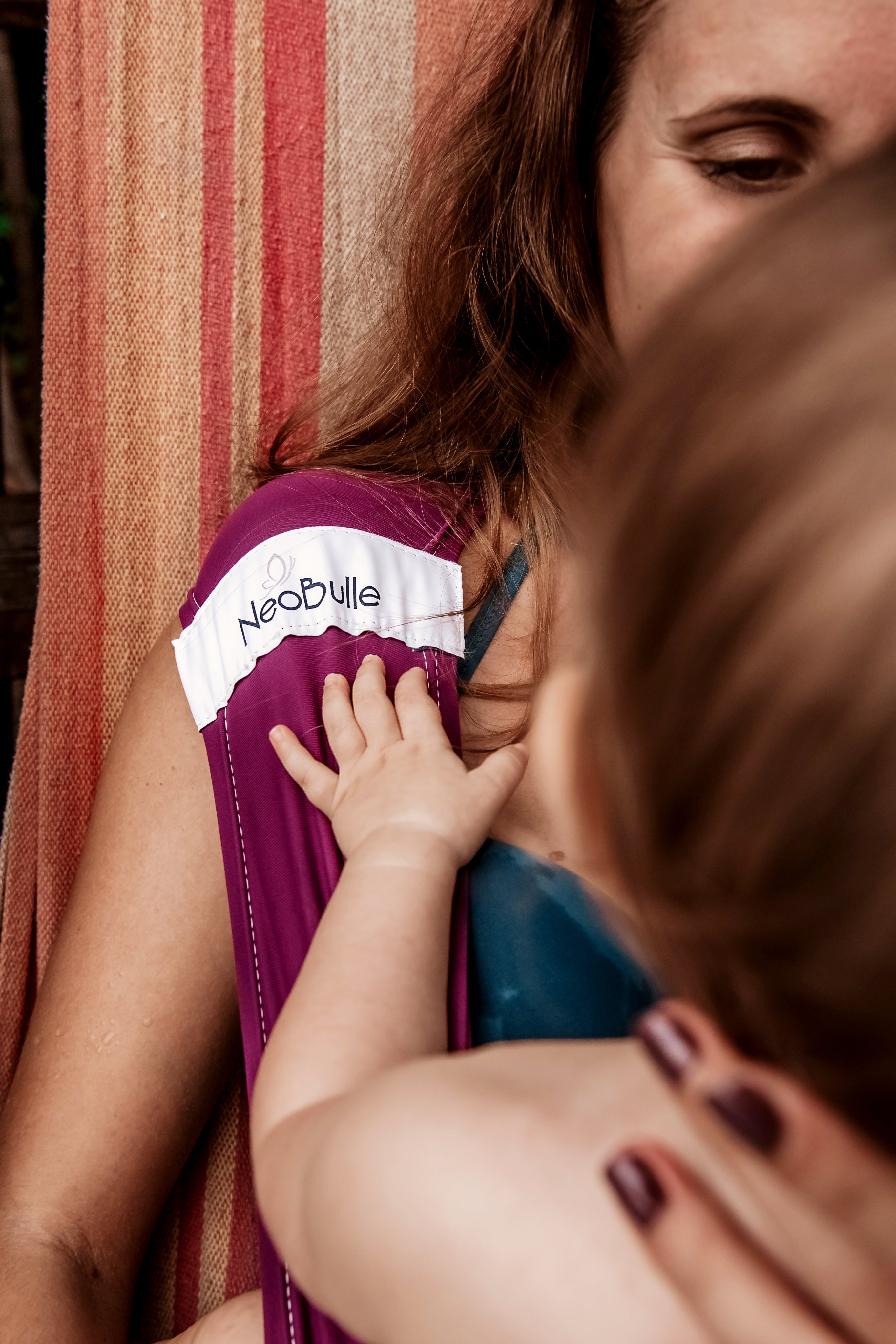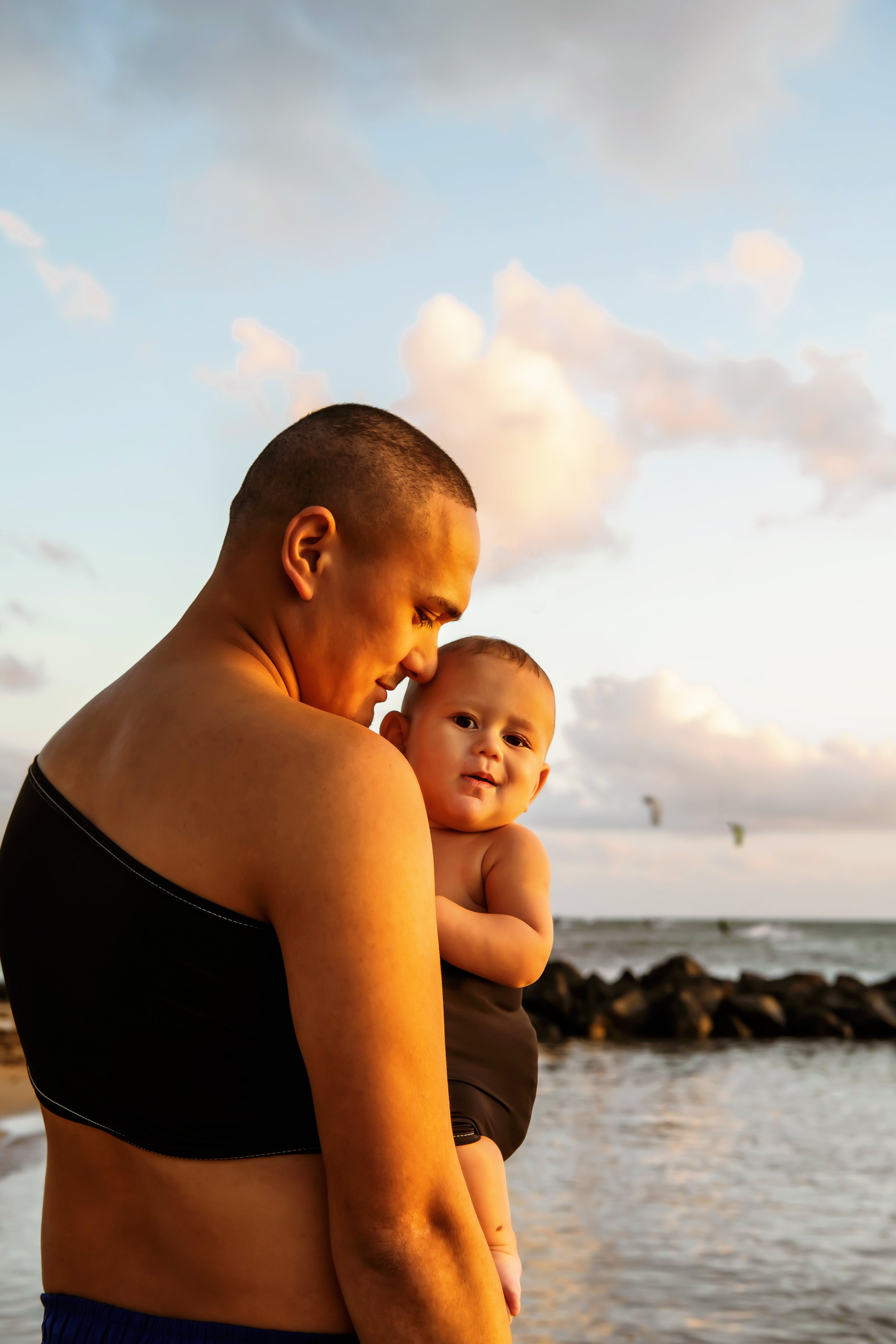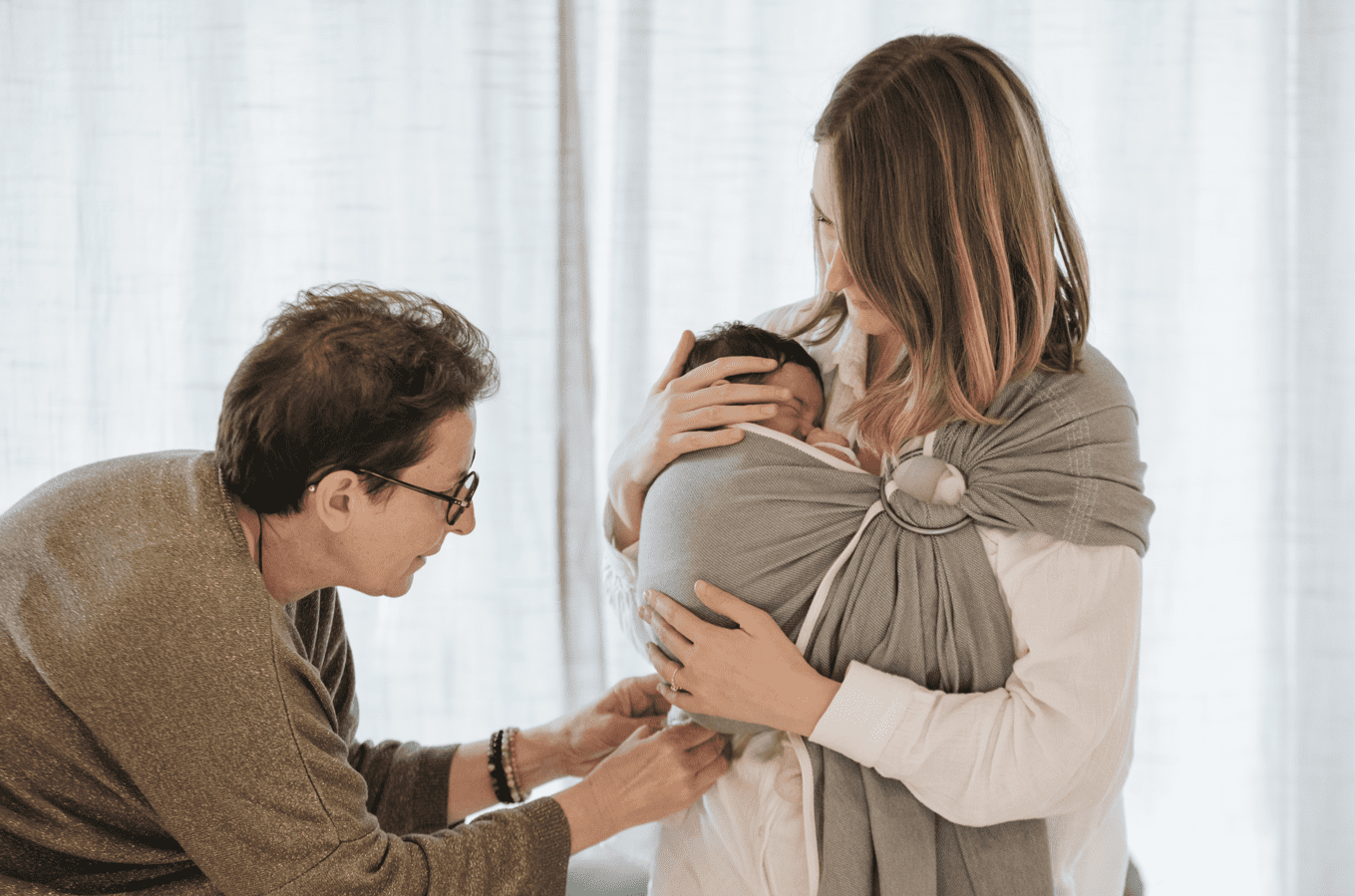Hip dysplasia is a condition that affects a non-negligible proportion of newborns and is characterized (in simple terms) by impaired development of the joint and a poor positioning of the femoral head within the hip socket. Without causing pain to the child, it still requires management to prevent later complications. In this context, the question of carrying is quite common: can you carry your baby despite the braces? Is there a risk of worsening the condition?


1 – A baby carrier, yes, but not just any
When hip dysplasia is suspected in an infant (or has been confirmed), the recommendations are to ensure that it is handled by avoiding as much as possible traction and extension positions of the leg, in order to maintain as much as possible the correct position of the femoral head in the hip socket. The proposed therapy is often carried out using bracing devices that aim to stabilize the leg in an appropriate axis and that, with time and the child's growth, the hip develops back to normal. The posture induced by orthoses is a combination of abduction (opening) and flexion of the thighs (knees also being flexed and spread apart).

Considering all this, it appears that the recommended positions for physiological carrying, notably with a slightly open pelvis and knees raised higher than the hips, are quite similar to those induced by the braces used to treat dysplasia.
Non-physiological carrying , characterized notably by a suspension by the crotch (narrow seat) and unsupported leg that "hangs", are on the other hand contrary to the intended goal.
Whether by arm or with the help of a baby carrier, carrying a baby presenting hip dysplasia is always possible but only if it helps stabilize the hips in flexion and abduction, which will be the case if the baby carrier is physiological.
2 – Baby carriers and braces for dysplasia
The biggest difficulty usually encountered is to reconcile the implementation of carrying with the presence of the orthosis. Several configurations are possible:
- The device can be removed a few hours a day: the baby carrier can then simply be used as usual during the "free" periods, which also allows for continuity of treatment by maintaining good postures longer.
- The device should never be removed: in this case, it will be necessary to adjust the setup to be able to use the baby carrier without compromising the treatment. Depending on the device used, the recommendations and adjustments will vary.
The soft abduction diaper
One of the simplest cases is that of the soft abduction diaper (also often called "cocoon" or "cocooning" diaper), as it is less prone to errors. The setup is the same as when carrying a baby without any brace, except that the little one will have more spread legs. The correct position is already provided by the diaper, the baby carrier simply fits around it.

With an abduction diaper, due to its rigidity and the fact that it extends high on the baby's belly, it is not possible to achieve a pelvic tilt and a well-rounded back.
With a wrap, you can opt for dynamic "plate-like" tying methods, such as the crossed swaddle for example. With a mei-tai or a preformed baby carrier, you can possibly widen the seat slightly to accommodate the more pronounced opening of the legs. With a sling, it is best to prioritize an installation as ventral as possible so that the carrier's abdomen maintains proper hip opening (on the hip, the opening is insufficiently pronounced).
Be careful to check that the baby carrier does not compress the baby's leg at the level of the diaper (mainly with wraps and slings). If there is difficulty on this point, you can pad the fabric on the edge of the diaper instead of reaching for the hollow of the knee.
The Pavlik Harness
The Pavlik harness, being more flexible, is often less bothersome than the diaper at the material passages and is more conducive to pelvic tilt. However, you must be very rigorous with the installation to ensure the abduction position is well maintained, since this time, the device will not correct it on its own. Displaced carrying methods are not recommended with this system for this reason.

Some children are sometimes clumsy; when this is the case, the baby carrier installation mainly requires ensuring that the position does not cause chafing or injuries and irritations. It may also cause discomfort for the wearer.
In all configurations, substituting a period of orthosis wear with a period of carrying cannot be done without prior medical advice.
3 – label "international hip dysplasia institute"

The International Hip Dysplasia Institute is a non-profit organization that works to prevent, diagnose, and treat hip dysplasia, aiming to improve the health and quality of life of children and adults with hip dysplasia. To this end, the organization has developed a certification label indicating that a product is safe for proper hip development.
Baby carriers bearing this label guarantee that their design preserves the baby's hip joint; this is a useful mention when there is doubt on the subject.

This label presents some limitations. Since it is a paid, expensive, and non-mandatory certification, the absence of the label does not necessarily mean that a baby carrier is unhealthy for the hips but sometimes just that the brand could not or did not want to perform the appropriate tests.
Moreover, it is important to distinguish between the notions of hip preservation, carrying physiology, and safety.
A baby carrier that keeps the femur in the correct axis but does not allow a good close body contact between the child and the parent nor a proper rounding of the baby's back is thus OK from a hip perspective, but not at all from a physiological and comfort standpoint (spread legs and straight back, it’s better than dangling legs but not very comfortable either).
Similarly, the safety of the baby carrier is completely independent of the notions of hip physiology and posture.
Carrying systems from the different ranges of neobulle have all been designed to allow proper development of the hips of very young children while respecting their physiology and safety. They all display or nearly all display the international hip dysplasia institute label and will allow you a comfortable carry for both your baby and yourself, with peace of mind.
If your baby is at risk of developing hip dysplasia or has already been diagnosed with it, the use of all our tools is possible.
Do not hesitate to contact a carrying instructor to help you choose the model, install it, and adjust it according to your specific situation!






